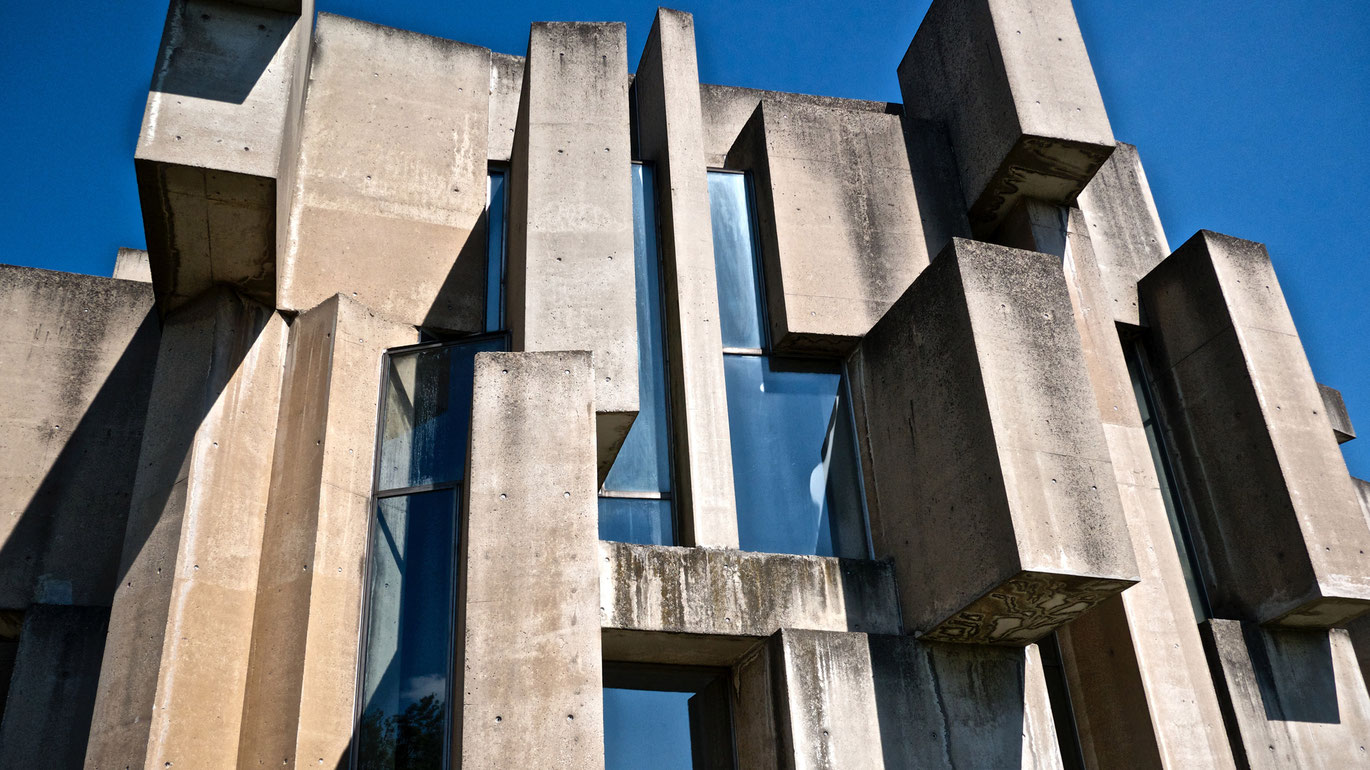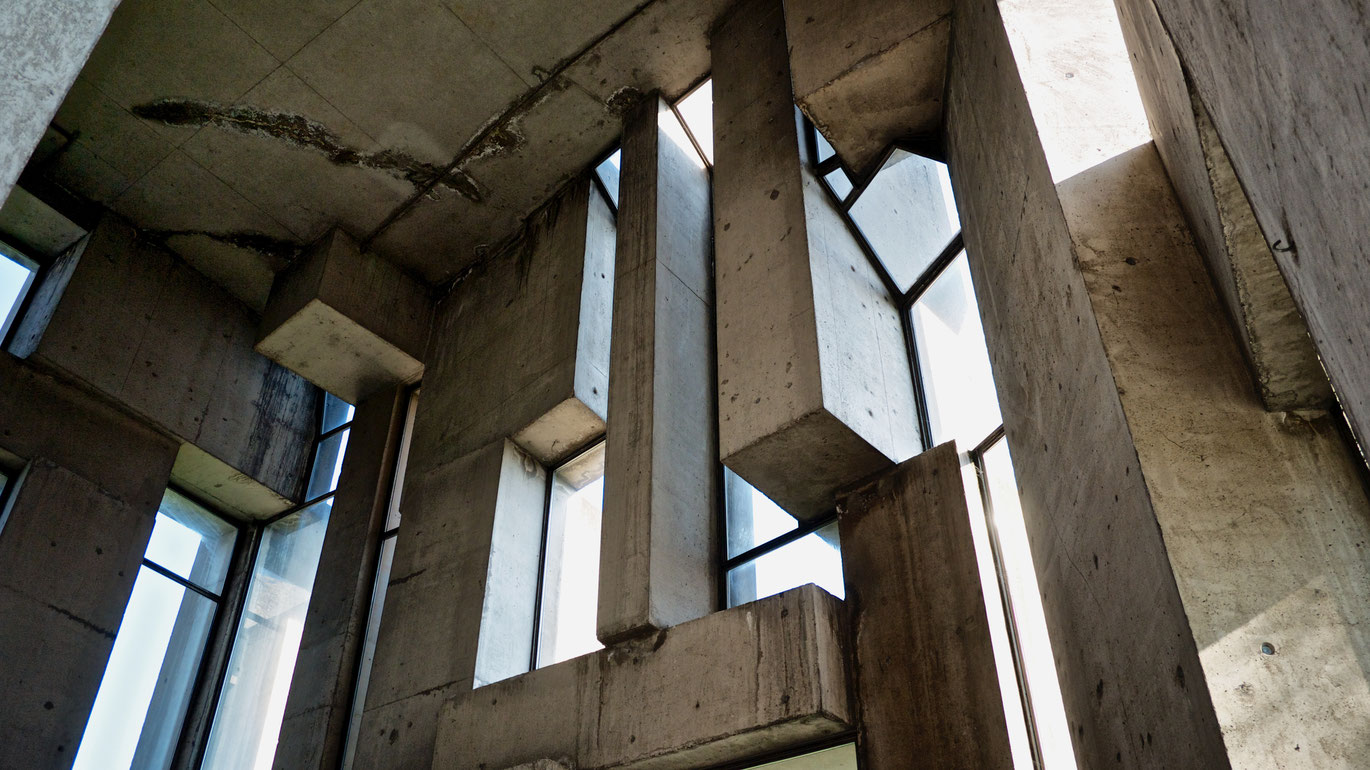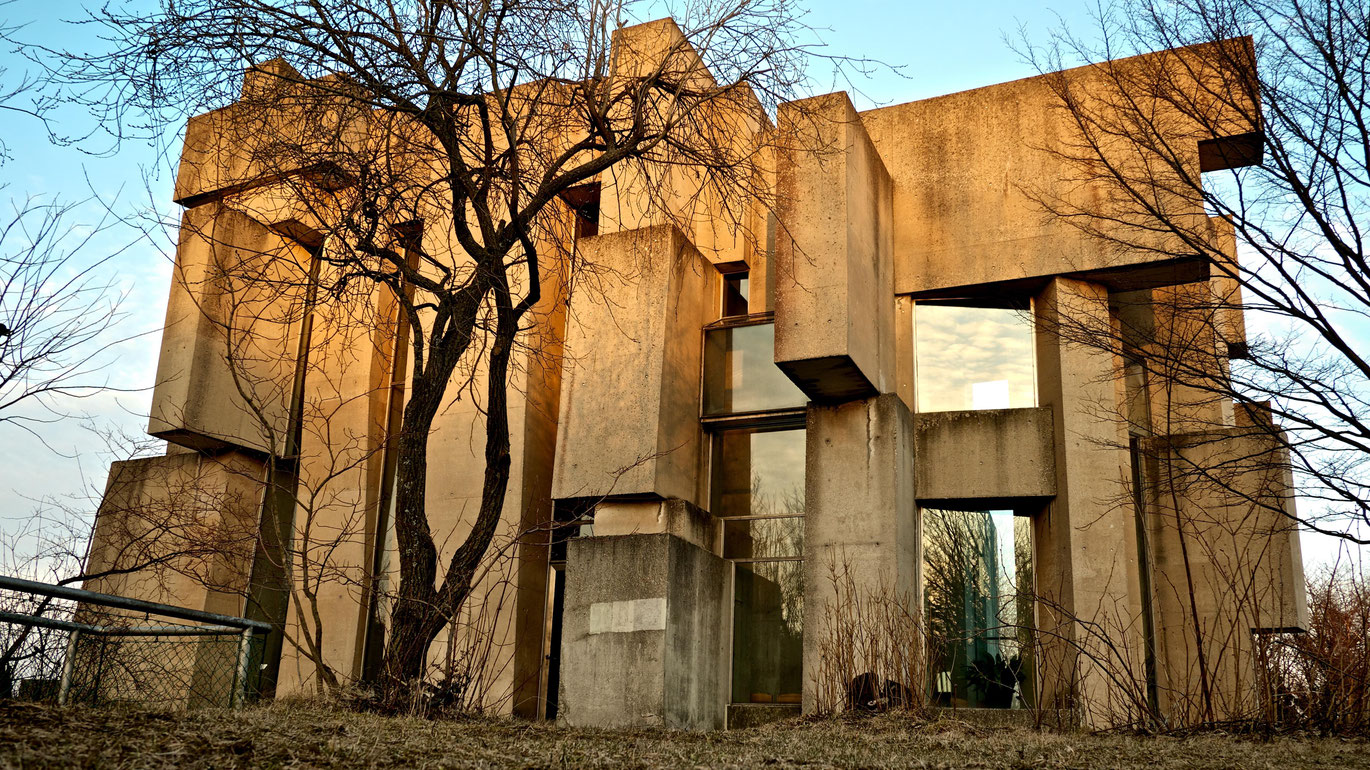Wotruba
Thomas Draschan devoted his experimental film to Vienna´s Church of the Most Holy Trinity, doing it with a fairly skilful translation of the visual motif. Draschan constructed his work of individual images, joining into a narrative. The assemblage of photographs places the focus on the temporal aspect and therefore the construction of reality. Above all, Draschan reveals in this way the artistic and architectural philosophy underlying this building, which Fritz Wotruba conceived and built from 1974 to 1976 with the architect Fritz Gerhard Mayr. Designed as a walk-in sculpture comprising individual blocks, the church´s form was intended to open up its structure from the floor to the sky through the basic architectural principle of layering the blocks vertically and horizontally. The linear construction of this layering gives the sculptural architecture´s temporal aspect additional meaning, and in the film this corresponds to the assembly of the individual images. Wotruba originally planned to construct the church of natural stone rather than concrete, as a kind of Stonehenge, if you will. This also clearly shows what was also important to him, an extremely archaic impression, which is however given a quite different personality through the use of concrete and amplifies the constructive aspect of the church´s architecture. This is where the film begins, developing its own film grammar from this sculptural form that from a modern perspective could be termed deconstructivistic. The film succeeds in providing a wholly unique interpretation of the materiality, the mood and the construction of the sacred space, and also in creating its own filmic reality.
(Harald Krejci)
Wotruba
2014
Austria
6 min 40 sec



